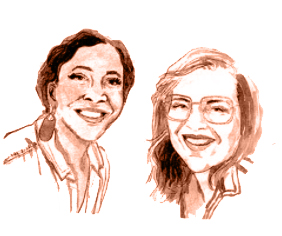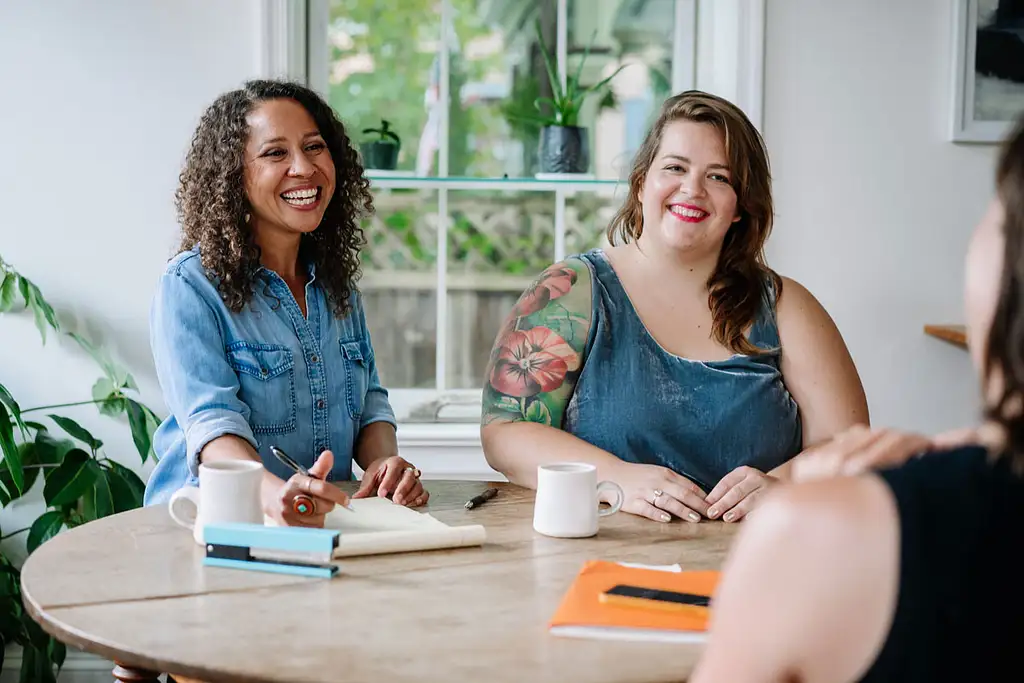Honoring Be Present: 35 years of Black Women’s Leadership
by Tiffany Brown
When I was in college at UC Santa Cruz, my area of focus was Community Studies with an emphasis on race and racism in the U.S. As a mixed race, working-middle class woman, who grew up in a predominantly white, wealthy neighborhood in Marin County, California, I was no stranger to either: race (and being different) or racism (as I was fine to keep as a friend, but my white friends had family mandates to not ever date a Black person…). I became a natural spokesperson for the racial moments of the 90s. There was the OJ Simpson trial, there was the Rodney King beating, and history class was always the kicker with the mandatory 25 pages on slavery in the US.
My life’s mission was to address racial challenges. The hard part was that every conversation about the issue led to a divide. I would speak up, and others would become defensive and shut down. The whole situation felt impossible. I was on a search to find a way to talk about race that created an opening instead of exacerbating a divide.
In 2002, after completing my 6-month internship with the Southeast Regional NAACP’s Prison Project in Atlanta, I flew back to Atlanta to participate in a conference organized by Be Present on Race, Gender, Power and Class. During my time with the NAACP, I met a participant in Be Present’s 18-month institute who encouraged me to attend their final conference that brought together a diverse community of women and girls to share the learnings of their cohort. I was hungry to learn about a model that would support me on my journey, and was absolutely nourished by the experience.
The format of that conference allowed for small groups to come up in front of the 100-person conference to introduce themselves. The model encourages sharing from the heart, and the heart is wild and free. One white, wealthy woman (seemed to go off script and) shared about an experience in her office, where she was a witness to racism against some Black women co-workers. She was feeling guilty about not having intervened. The founder, and lead facilitator, Lillie Allen, slowed down this moment and asked for a Black woman to volunteer to come up to the front of the room. Now this happened more than 16 years ago, but I still remember the conviction of my college-aged self. I raised my hand and went up to the front of the room. Lillie asked me to say how this all made me feel. I fancied myself a wizard with race theory, so I began to spout off all the key words and phrases. Lillie stopped me. She asked me to say what I was feeling. I was just 3–4 feet from this white woman, who had done nothing in the face of racism, and I looked at her, breathed, and shared from my heart. My heart was broken. I hated that I felt I had no choice as a Black woman in the U.S. as to whether or not I wanted to combat racism, and this white woman did. And as I looked at that white woman, I saw that her heart was broken too. I saw that racism is dehumanizing for all of us, and it always has been.
I entered into a deep relationship with this work of Be Present and Lillie. It helped me to navigate my early 20s as an employee of an organization, YES!, which had adopted the Be Present Empowerment Model in its journey around race. The Co-Directors (a husband and wife team, and only other staff besides myself) were white, and one was the son of John Robbins of the Baskin Robbins ice cream family. Not only were we navigating race, but we were also unpacking the exceptional privilege of an inheritor, who’d founded a non-profit. So we were also talking about power.
The story of my time with YES! doesn’t exactly have a happy ending, but that’s not the point here… Over the course of my 20s, I learned about a model that centered the importance of weaving together our stories and how we impact one another. With the support of this model, I found my voice again, and rose to co-leadership of YES!. During this time at YES!, one of our major areas of programming was called Leveraging Privilege for Social Change, which brought together young people with “exceptional wealth or fame” for a week of skills sharing and movement building. It began as a collaboration with Resource Generation, Grassroots Leadership, and Changemakers. The constituency of YES! expanded to include powerful leaders of non-profit organizations. This was the beginning of a life-long journey to sit in circles with people with wealth and other movement leaders. The work was and continues to be about how we bridge the increasing divide, and unite under the power of a collective vision. The hard part is that we’ve all been so traumatized by this social and economic system with messages about what our (or others) race, power, class and gender mean, that it can be hard to come together to do what we say we are about! But Be Present opened my eyes to a path and tool box to help us to come together.
When I left YES!, I stayed connected to the work of Be Present, but drifted a bit. I did bring the tools, and an acknowledgement of the work with me everywhere I went. I brought it to my organizing with Resource Generation to strengthen our commitment and transparency about the power of cross-class, multi-racial leadership. I used it to hold space for young people with wealth to talk about their pain and their path. Be Present helped me to hold the clarity that our economic system isn’t working for anyone. If the American Dream is to accumulate wealth, but then even the wealthy aren’t happy, something is off! The work of Be Present helped me to stay true to myself, to see and to create space for the light in others, and to build effective relationships and alliances as I make my way through this world.
One of the first steps of the Be Present Empowerment Model is to “know yourself outside the distress of oppression.” This work started over 35 years ago as the Black Women’s Health Project. Lillie was involved in public health work in the south, and she saw that disease was plaguing Black women. We were internalizing racist messages, and suffering in silence, so Lillie developed a model that centered the individual to have a community of support to discharge and work on the messages and stories that weren’t serving us. The oppression was causing disease, and she was determined to support other Black women in stepping outside of this. The next step is to listen to others in a clear and present state, which is largely understanding the importance of the quality of attention we give one another. If we aren’t giving that, it tends to be due to a trigger that is getting in the way of us interrelating. This is where a lot of transformation in work across difference can happen. We’ve been so divided that it is essentially rewiring and humanizing one another so that we can BE together. And shorthand, being together and staying in relationship is the final step.
It’s important for me to lay out the history and the steps to presence the leadership and brilliance of Black women.
It seeps into so many other areas of work. I carry it with me now as I step into a cross-class, multi-racial leadership team with my business partner as we center love and humanity in finance. I draw upon the teachings and the diverse community of supporters as I find a new kind of voice as I speak the language of finance. There are not many Black women in this sector, and not many investments that look to lift up our people, yet here I am (and here we are), building this financial advisory firm rooted in racial and economic justice. We are turning our attention to this area of work, with all the tools we can muster in our toolbox, to bridge the racial and economic divide. For this, I call upon the great source of strength: Be Present.
People speak of political homes, and Be Present is one of mine. A couple weeks ago, I went to Be Present’s conference celebrating 35 years of Black Women’s Leadership in Building Inclusive Movements for Social Justice. There were over 115 participants. It was the most diverse conference I have ever experienced. Poor folks, middle-class, rich folks (as Be Present has done a lot of work with the Threshold community), Black folks, Native folks, white, Latinx, men, women, non-binary… And we all came together to honor Black women in this community of practice, which looks so much like the kind of world we want to be in. In Be Present, the people are the agenda, and the outcome of the conference felt like the brightest expression of our collective spirit and intention to work towards a world that suits all of us.
This work speaks to the depths of my spirit. And my soul’s prayer is that I may presence it always.



